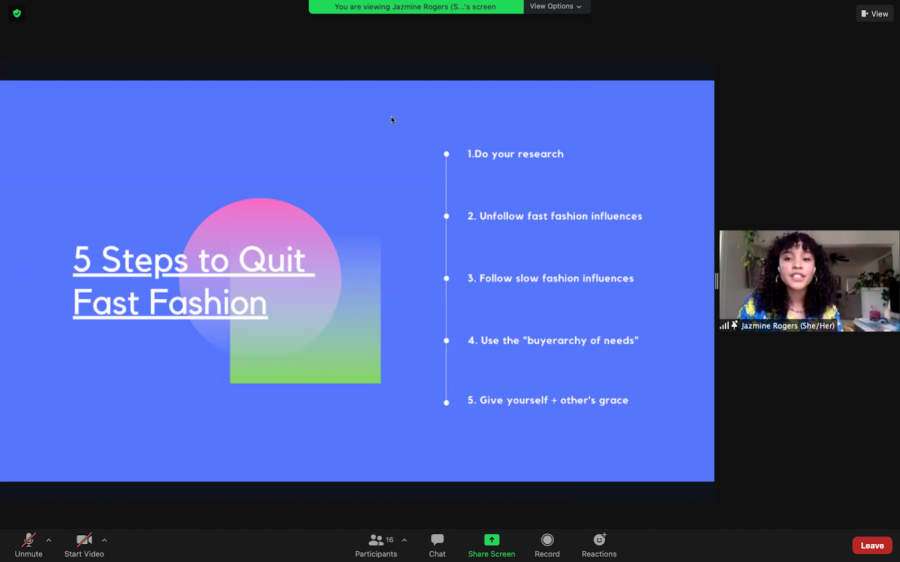San Diego-based sustainable fashion and lifestyle advocate, Jazmine Rogers (@thatcurlytop), discussed the interconnectedness of fashion and sustainability and how to take part in the slow fashion movement in GreenFest SDSU’s “Next in Sustainable Fashion” virtual event on April 23.
Simran Jain, second year and commissioner of Greenlove, San Diego State’s main sustainability organization, wanted to host an event contributing to sustainability and educate people on these two topics.
“Sustainability and fashion are important topics because sustainability affects our most vulnerable communities, and fashion is something that, whether or not you can admit it, everyone participates in,” Jain said. “Everyone has to wear clothes, and so we might as well be educated on the ethics and the best way to make those decisions.”
Rogers’ slow fashion journey began in college as she majored in fashion merchandising and learned the harmful truths of the fashion industry, such as labor trafficking. This and other harsh truths ultimately changed Rogers’ mindset as she set out to live more sustainably.
“I can’t move forward wanting to be a part of the fashion industry if I’m not a part of the change,” Rogers said. “What I love to do is present to people what I wish I first heard about [the slow fashion lifestyle] because there are a lot of angles and it’s overwhelming.”
In her presentation, Rogers provided five tips to quit fast fashion and partake in slow fashion, the approach to fashion that considers the processes and resources required to make clothing, as opposed to fast fashion which involves purchasing inexpensive clothing produced rapidly by mass-market retailers.
The five tips include: doing your research, unfollowing fast fashion influencers, finding a community and following slow fashion influencers, using the “buyerarchy of needs” and giving yourself and others grace.
Rogers utilizes the “buyerarchy of needs,” inspired by Maslow’s Hierarchy of Needs when looking for new clothing pieces to add to her wardrobe. Rewearing what you have, repairing, upcycling and borrowing clothes are at the bottom of the tier, while thrifting and purchasing are higher up.
Although thrifting is one of Rogers’ favorite ways to partake in the slow fashion movement, she noted the gentrification that’s taken place.
“Since it’s on the rise, there is a huge gentrification of thrifting that’s occurred where people are bringing the overconsumption they have with fast fashion and bringing it to thrifting,” Rogers said.
“We just need to be more mindful when we are approaching thrifting in general…just make sure you’re buying in your size range and [for example] don’t buy out all the coats because there may be people in your community who might need it.”
Greenlove Representative and co-host of the event, Audrey Carlson, said the biggest takeaway she gleaned from Rogers’ presentation is the reminder that no one can be a perfectly sustainable person.
“Sometimes fast fashion is simply the most accessible option for some people, but I do think that those with the privilege and ability should do their best to participate in the slow fashion movement when consuming,” Carlson said.
Rogers concluded with a reminder that joining the sustainable lifestyle is a learning process and any effort is better than none.
“At the end of the day we’re all in this together to try to see this industry change and see the planet and people be restored,” Rogers said.
“I think we have to keep in mind that we just need everyone and anyone on board to try and make an effort and make a change.”







